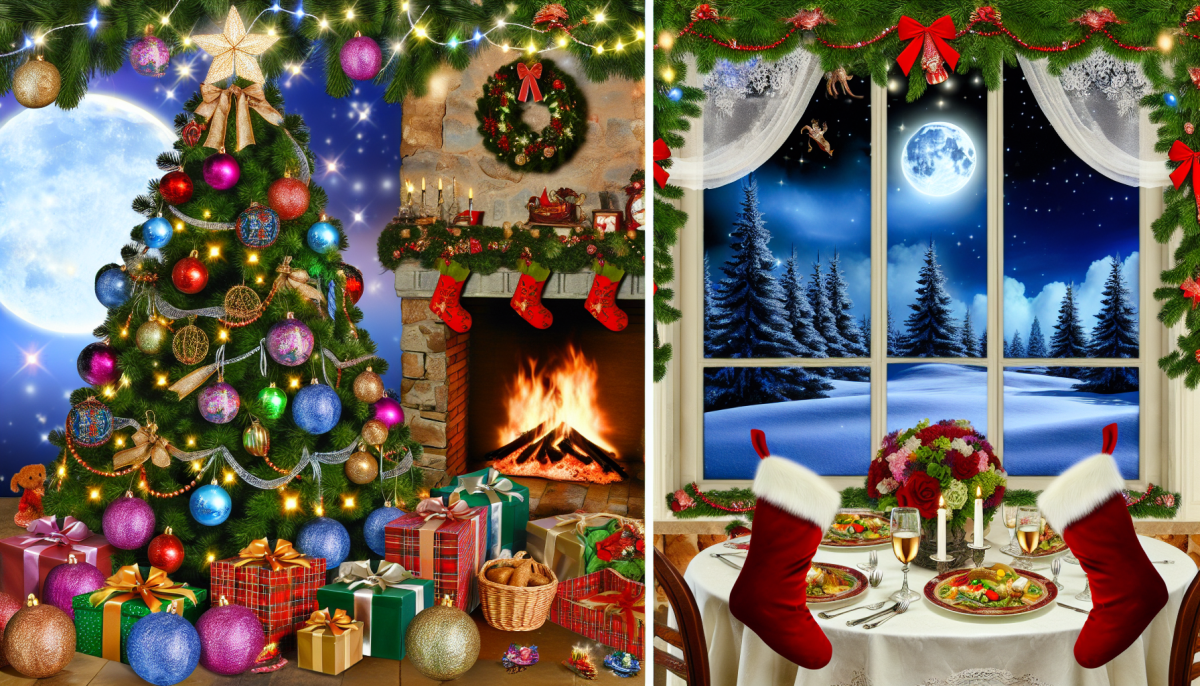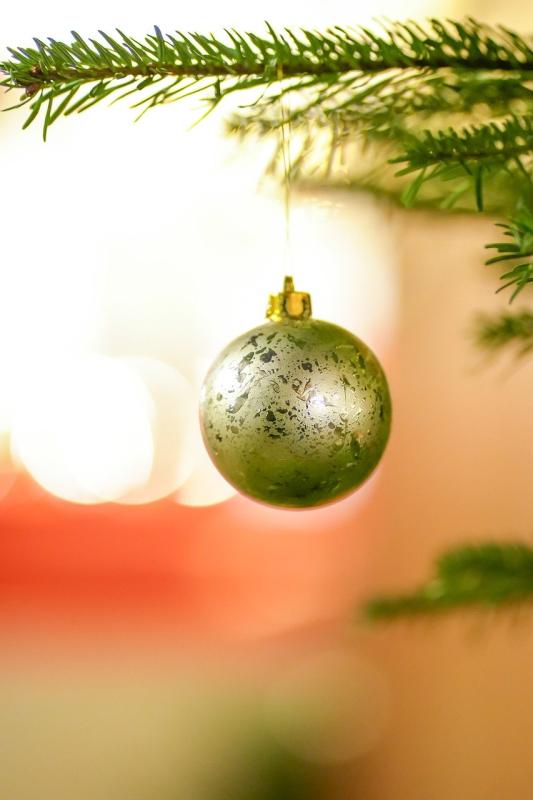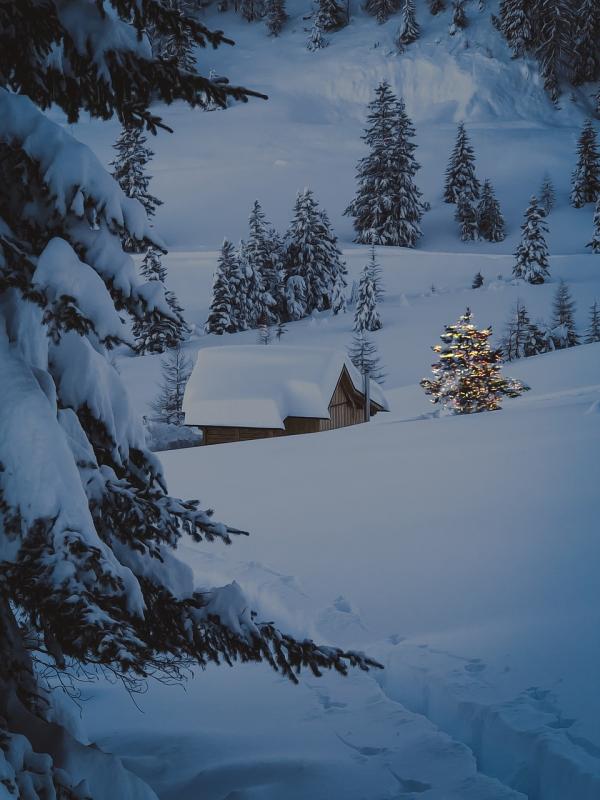Origins of Christmas
Christmas has been celebrated since the 4th century AD, though its current form is a synthesis of different traditions from across the world.
Early Christmas celebrations were marked by the winter solstice, the season of increase in light and the birth of the Sun God. In 338 AD, Pope Julius I declared the date for celebrating Christmas as December 25th, which is now observed as the traditional date for celebrating the birth of Jesus of Nazareth.
The holiday’s main festivities, such as gift giving, feasting and caroling, originated in western Europe. Some popular customs, such as the display of Nativity scenes, can be traced back to the customs of the Byzantine Empire. Furthermore, much of the present-day Christmas celebration draws upon British, German and Dutch traditions.
Later on, the American version of Christmas was influenced by different immigrants, including African Americans, Hispanic Americans and Asian Americans. But many of these diverse cultures, who each celebrated the holiday in their own unique way, adopted elements from each other, resulting in the Christmas we enjoy today.
Christmas Traditions Around the World
Christmas is celebrated all over the world, but in many different ways. Every country or culture has its own unique Christmas traditions, some of which may have been influenced by other countries.
In many countries such as Australia, Canada, and the United States, Christmas is traditionally celebrated on December 25th. In most parts of Europe, the Christmas celebrations begin on December 6th rather than December 25th, and Christmas Eve is the main day of celebration. Other countries have different customs and ways of celebrating, such as India and South Africa.
Many countries celebrate with a traditional nativity scene. Nativity scenes have become increasingly popular around the world, and are often used to tell the story of Jesus’ birth. In a traditional nativity scene, Mary and Joseph are surrounded by shepherds, animals, and the Three Wise Men, with the baby Jesus in a manger.
Many countries exchange gifts on Christmas day, usually presents wrapped in brightly-coloured packaging. In the United States, children put shoes outside their bedrooms, hoping that Santa Claus will bring them gifts. In many parts of Europe, people give children small treats, such as chocolate coins or oranges.
Christmas trees are often placed in homes and decorated with lights, tinsel and baubles. In the United States, a popular decoration is a red Santa hat on top of the tree. In the United Kingdom, there are wooden cutouts of different characters, such as Father Christmas and a robin.
In some countries, Santa Claus is not the main character of the Christmas season. For example, in Norway, they celebrate with a Yule Goat. This figure is said to “keep an eye on naughty children and ensure that they behave”.
No matter where you are celebrating Christmas, the spirit of the holiday remains the same. Christmas is a time to come together with family and friends, and to appreciate the season of goodwill.
Development of Christmas Traditions in the United States
Christmas is the most celebrated holiday in the United States. It has become a national holiday, celebrated with both religious and secular traditions. Over the years, the Christmas traditions we know and love have developed and evolved. Let's take a look at the development of Christmas traditions in the United States.
Early Beginnings
The first Christmas celebration to be held in what is now the United States occurred in 1564 in St. Augustine, Florida. It was celebrated with a Mass and was a celebration of the Catholic faith. Over the next two hundred years, Christmas in the U.S. continued to be celebrated primarily by Catholics, and some parts of the country still has deep Catholic roots.
The 19th Century Revolution
In the early 19th century, Christmas traditions in the United States began to change. This was largely due to the influx of non-Catholic immigrants from Europe who brought their own Christmas traditions to the United States. The Protestant traditions of decorating houses, singing carols, and exchanging gifts were blended with the older Catholic traditions and slowly but surely, Christmas began to become the secular holiday we know today.
Modern Day Celebration
Today, the Christmas tradition in the United States is a mix of religious and secular celebrations. Every year, millions of people participate in activities like decorating Christmas trees, exchanging gifts, singing carols, and attending church services. For many Americans, Christmas is still a religious holiday and for others, it is a time for family and friends to come together and celebrate.
No matter how you celebrate Christmas, the holiday traditions we know in the United States have been shaped and developed over many generations and still continue to evolve.
Commercialization of Christmas
Since the beginning of its celebration, Christmas has evolved over the centuries. One of the more recent developments is the commercialization of Christmas. What started as a holiday with a religious foundation became an increasingly commercialized affair during the 19th century.
The term "Christmas creep" refers to the tendency of businesses to start their Christmas activities earlier each year. By the 1960s, the Christmas shopping season had grown so much that some businesses would begin efforts to boost their annual sales as early as October. This trend has only grown in the years since.
In the United States, Christmas has become a major retail holiday, with shopping malls and stores often open long hours and stocking an array of merchandise from well before Thanksgiving. Department stores use sales and discounts to draw people into their stores. Even the decorations on display in stores, the shopping bags, and other promotional materials can be seen as marketing the Christmas holiday.
Christmas has had an especially noticeable influence on television programming. Many special Christmas-related shows, often sponsored by companies hoping to increase their sales, are aired year after year. Between November and January, stores advertise heavily and offer deep discounts in order to attract customers to spend more.
One of the more visible aspects of commercialization in recent years is the commercialization of Santa Claus. Images of Santa Claus, often in the form of a logo or advertisement, are used by companies to market and advertise their products during the Christmas season. In some cases, Santa is used to market products outside of the Christmas season with slogans like "The Santa in all of us."
The commercialization of Christmas has been a controversial topic as many people believe that it has had a profound effect on the way people view and celebrate the holiday. Opponents of commercialization cite its potential to undermine the original spirit of the holiday and to transform it into a mere shopping event. Others worry that the commercialization of Christmas takes away from its religious significance.
Political Controversy Surrounding Christmas
For many centuries, Christmas has been a controversial holiday due to its religious roots and historical context. As early as 1550, English Puritans and English Separatists attempted to abolish Christmas celebrations. In the 1700s, Christmas celebrations again became illegal under an English law during the reign of Oliver Cromwell. In some cases, celebrating Christmas was even punishable by a jail sentence.
In the United States, Christmas is often viewed as a secularized holiday, though there have been controversies far beyond protests about nativity scenes. Activists on the left have argued that the practice of giving Christmas gifts perpetuates consumerism, threatens the environment, and further enriches the wealthy. Activists on the right have protested against laws that would force businesses to remain open on December 25th, or against schools that allow religious Christmas songs or events.
Despite all of these political debates, Christmas is still celebrated widely as a time of remarkable joy, peace, and goodwill. And, as a reminder of its religious roots, millions of people around the world still come together to celebrate the birth of Jesus Christ.
Symbolism and Significance of Christmas Decorations
Christmas decorations are a fundamental part of Christmas celebrations. Decorating the home with a variety of holiday decorations is an age old tradition that has been around for centuries. Different decorations have different meanings for different cultures around the world, but most can agree that many of them contain symbols of hope, joy and love.
Lights
One of the most prominent and symbolic Christmas decorations are lights. Lights are used to brighten the darkness associated with wintertime and their brightness inspires feelings of joy and hope in many cultures. Lights are believed to represent the hope of the Christmas season and the power of light to eliminate darkness.
Ornaments
Ornaments are a common way of decorating Christmas trees. Each country and culture puts their own touch on the ornament they use, but they all represent the same thing—a timeless reminder of the season. Ornaments are usually symbolic of the joy, love and hope that the season brings. The gifts and the decorations are a way to reconnect with family and friends and create a living memory of your family’s past and your hopes for the future.
Wreaths
Christmas wreaths are circular decorations traditionally made from evergreen branches. The circular shape is believed to represent eternity and everlasting life, while the evergreen branches represent hope and renewal. Wreaths are placed on the front door of homes to let strangers know that Jesus is the reason for the for the season.
Mistletoe
Mistletoe is a traditional Christmas decoration that is believed to be an old-world charm of Christmas. The plant is believed to have healing, protective and magical powers. Many cultures have associated it with fertility, love, health and good luck. Kissing under a mistletoe is a symbol of friendship and love. Giving a mistletoe plant as a gift is believed to be a symbol of good luck and prosperity.
Christmas and Religion
Christmas is associated mainly with Christianity, being a celebration of the birth of Jesus Christ. The Bible does not give an exact date of Jesus' birth, but since the 4th century, December 25th was chosen by the Catholic Church as the official Christmas Day.
Most Christian denominations have special services for Christmas, often involving services of worship, music, and Scripture reading. The Christmas season is usually accompanied by decorative lights, music, trees, and special meals. In some countries, gift giving is part of the celebration.
In other religions, Christmas is also celebrated, but usually in a smaller scale. In Islam, for instance, some folks celebrate Nooruz, a New Year's feast, though it is not as close to the Christian observance as Christmas.
Christmas has become a cultural-economic phenomenon of shopping & buying gifts, which has lost its religious aspect in many countries. There are counter trends and reactions against the cultural-economic aspects of Christmas, and some countries are showing increased interest in its religious meaning.
Christmas in the 21st Century
In the 21st century, Christmas has become a truly global phenomenon. Even though its central focus remains the same, the way in which people across the world celebrate this festive season has changed drastically from centuries ago. With the emergence of globalization, traditional Christmas customs such as gift-giving, tree decoration and feasting have been adopted as integral parts of celebrations in many societies. International travel and improved communication technologies have helped to bridge cultural and religious differences, bringing people of diverse backgrounds together to share in the joy of Christmas.
The rise of commercialization has also made Christmas a multibillion-dollar global industry. Shopping malls, online stores and large retail franchises offer a wide variety of festive merchandise - from decorations to presents, Christmas treats and holiday experiences. Similarly, the internet is filled with Christmas-related content - from holiday greetings to colorful recipes, festive playlists and iconic movies.
In the end, it is the underlying spirit of Christmas that unites us all - a reminder of the generous virtues and values we hold dear. May this season bring us closer together as a global community, spreading joy and peace to every corner of the world!
Changing Views on Christmas
Though the traditions of Christmas have evolved over time, the perspectives people have of the holiday have also changed. As technology and culture have developed and adapted, the world has shifted its focus from the religious implications of Christmas to the modern day- secularized view.
In the context of religion, Christmas has traditionally been a day to commemorate the birth of Jesus Christ and celebrate with prayer, worship, and reflection. Today, however, that traditional perspective has shifted to the larger cultural context of the holiday season. Now Christmas is more about the happy gathering of family and friends to celebrate the season in joy and goodwill.
The growth of technology and global media has allowed for different countries to share in cultural experiences and traditions, enabling cross-continent specials and holiday parties that weren't possible decades ago. Christmas has become a much more diverse holiday than it was originally, as different cultures have adopted their own versions of it, including Santa Claus and the exchanging of gifts.
This diversification has led to a more global acceptance of the holiday, no matter what religious background or background in general people have. So while Christmas is still rooted in Christianity, it has become a time of celebration allowing people to join together in the spirit of the season, regardless of their individual customs or beliefs.
Conclusion
Christmas is a time for friends and family, for joyous celebration and reflection, and for gathering together to remember the past and look forward to the future. We see this in our collective memories and traditions of this holiday, which continues to evolve and be shaped by the world around us. From its ancient roots in astronomy and religion to the globalized and commercialized holiday we know today, Christmas is an integral part of our collective international culture and history.



